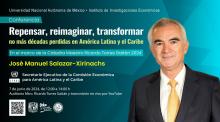News list
Search results
Showing 1 to 20 of 451 results in 23 pages.
7 de June de 2024 | Speech

4 de June de 2024 | Announcement
4 March 2024 | Press Release
8 de November de 2023 | Press Release
3 October 2023 | Infographic
3 October 2023 | Infographic
3 October 2023 | Infographic
3 October 2023 | Infographic
3 October 2023 | Infographic
3 October 2023 | Infographic
3 de October de 2023 | Infographic
3 de October de 2023 | Infographic
19 de July de 2023 | Infographic
19 de July de 2023 | Infographic
19 de July de 2023 | Infographic